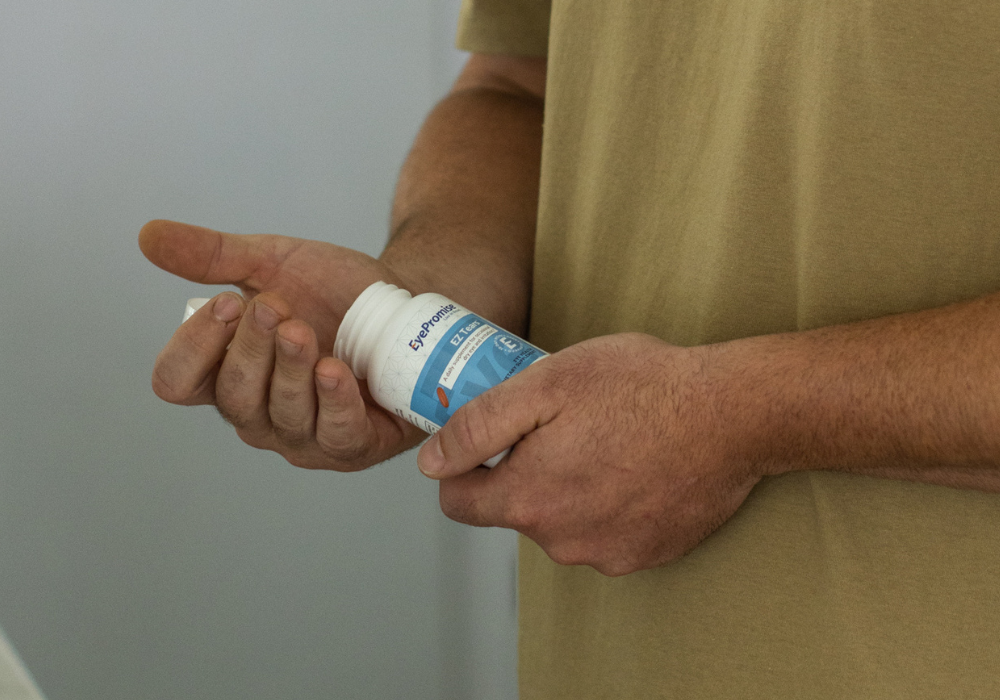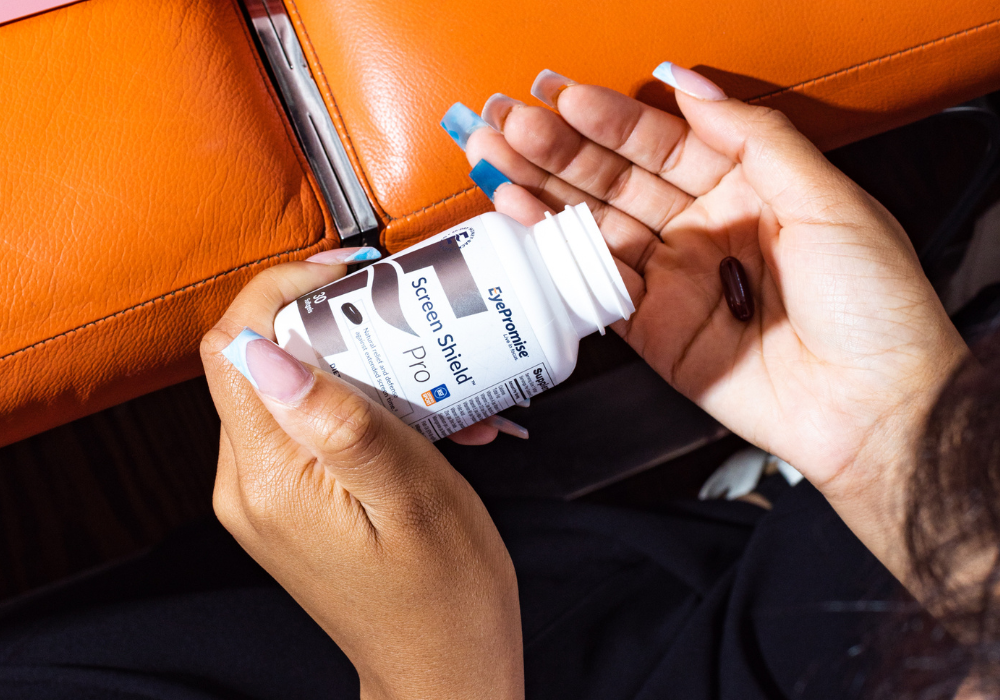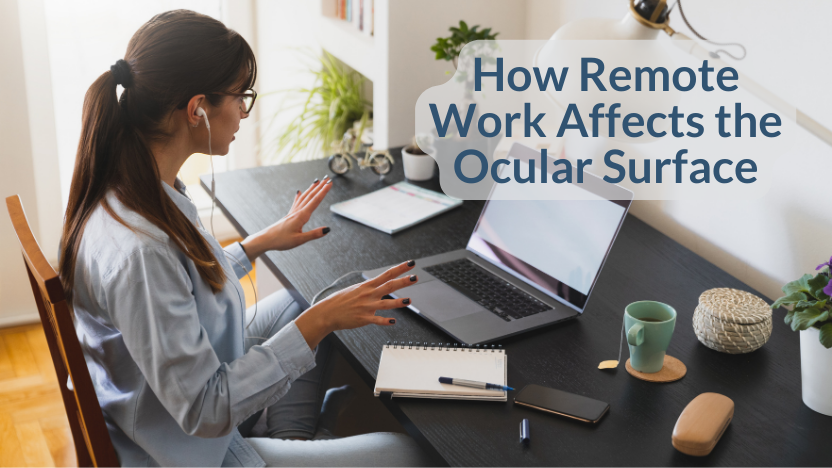Does Working From Home Affect the Ocular Surface?
Posted by EyePromise on May 26th 2023
Lifestyle has a huge impact on eye and overall health. Since the pandemic, working from home has become a standard in the workplace. The TFOS lifestyle: Impact of societal challenges on the ocular surface report reviews the potential impact of several lifestyle choices on ocular surface health, including working from home. April Jasper, OD, FAAO, shares their findings and her recommendations in an article for Optometric Management.
How Many People Are Actually Working From Home?
Due to the COVID-19 pandemic, the amount of work performed at home increased from 4.7% in 2019 to 61% in 2020. In a monthly study from Stanford specifically focused on working from home, researchers surveyed 10,000 workers form across the country and across industries, They found:
- 60% of workers are fully in-person
- 28% of workers are hybrid
- 12% of workers are fully remote
Additionally, they shared that 27% of paid full-time days were worked from home in early 2023, mostly in hybrid settings (i.e., partially in the office and partially from home).
The Impact On the Eyes

In the systematic review, authors determined that the increased screen time and digital working/learning during the pandemic “were associated with an increased risk of developing new or worsening pre-existing ocular surface [issues].” Because many companies and schools continue to offer remote work and learning, ocular surface symptoms will likely persist, increasing in frequency and severity. This pattern of decreased blink rates and meibomian gland dysfunction leading to ocular surface symptoms will continue unless eye care providers intervene.
What Can Be Done?
Dr. Jasper shared that she aims to “ask every patient about their work habits” along with questions regarding their daily screen time. Her goal: to educate patients on ocular surface issues and understand patient needs to prescribe the best care protocol. Recommendations like the 20-20-20 rule became a popular remedy to long days spent on digital devices, but there’s more than can be done from an eye care provider perspective.
Nutraceuticals
Nutrition can be an invaluable tool in the fight against ocular surface issues and screen time. EyePromise® has two eye health nutraceuticals that we recommend for these instances.
EyePromise EZ Tears™ is an occasional dry eye formula designed to relieve the symptoms associated with ocular surface issues quickly from the inside out. With ingredients like high-quality Omega-3s, evening primrose oil, green tea, and turmeric, EZ Tears works to rebuild homeostasis on the surface of the eye and helps patients produce more high-quality tears. With just two softgels a day, patients can start feeling relief in as little as one week.

EyePromise Screen Shield™ Pro was designed with screen time in mind. Experts included ingredients like dietary zeaxanthin and lutein, bilberry extract, and Vitamin D to help protect the eyes from the harmful blue light emitted by screens and mitigate eye strain and fatigue. The simple one-a-day dose makes it an easy addition to patients’ daily routines.

An added benefit: EyePromise EZ Tears and Screen Shield Pro can be taken together!
Remote work isn’t going anywhere, so eye care professionals need to adapt their care protocols to the new modern way of working. Proactively asking patients about their work settings can help identify those in need before their symptoms get too bad. Offering patients nutraceuticals like EyePromise EZ Tears and Screen Shield Pro can help patients mitigate screen-time-related and ocular surface symptoms.

